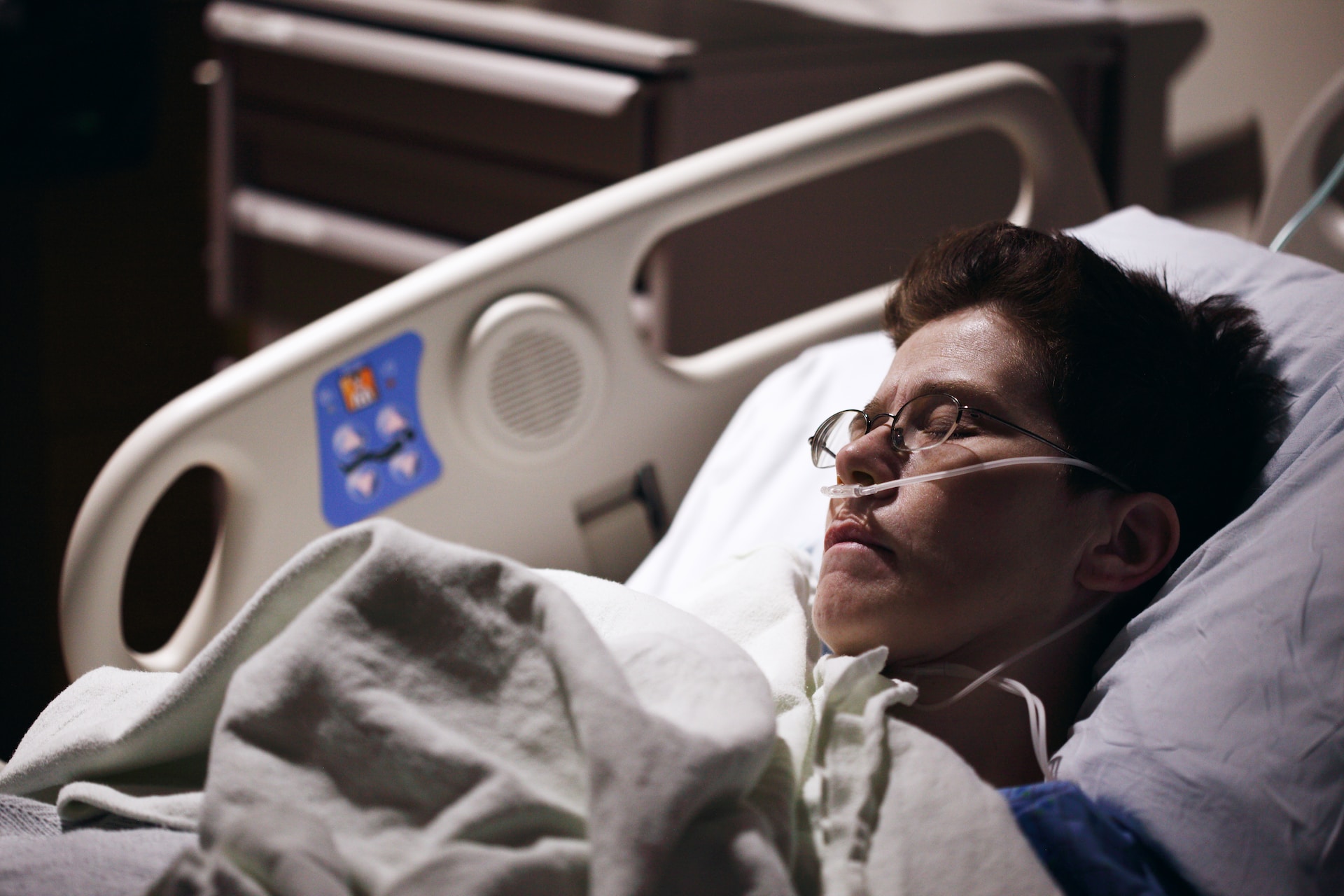Compared to salmonella, listeria results in a higher mortality rate. What makes listeria particularly dangerous is its ability to survive in diverse conditions and withstand different temperatures. The presence of the listeria monocytogenes bacterium can lead to an infectious disease known as listeriosis, which affects both humans and animals.
The disease is rare, but for humans, it can cause serious complications. Among other things, listeriosis can attack the nervous system, leading to meningitis. Listeria monocytogenes is also particularly dangerous for pregnant women. Listeriosis is often diagnosed based on clinical symptoms. It is possible to cure listeriosis completely.

Listeria monocytogenes is a common bacteria found in the environment![]() . The bacterium can be found in various locations such as soil, water, sewage, rotting plants, silage, and both wild and farmed animals. Additionally, contact with the excretions and secretions of an infected animal can also lead to infection. Listeria is also present in food products, making the food route the most common source of infection. Listeria can be found in the following foods:
. The bacterium can be found in various locations such as soil, water, sewage, rotting plants, silage, and both wild and farmed animals. Additionally, contact with the excretions and secretions of an infected animal can also lead to infection. Listeria is also present in food products, making the food route the most common source of infection. Listeria can be found in the following foods:

Dairy – Dairy products, such as unpasteurized milk or cheese, can often be a breeding ground for listeria microorganisms. This includes yellow cheeses, but greater caution should be exercised with moldy varieties like brie and camembert. To minimize the risk of listeria infection, it is advised that pregnant women refrain from consuming such cheeses. Additionally, frozen treats like ice cream can also potentially harbor listeria bacteria.
Meat – Listeria bacteria multiply quickly in animal products. It can parasitize raw, frozen, or cooked meat, as it has resistance to different temperatures. Additionally, it can be found in both natural and smoked fish. The primary cause of listeria infection is usually insufficient meat pasteurization. Microorganisms can be killed through heat treatment, and proper food storage is crucial to prevent contamination.
Fast Food – Bacteria thrive in both prepared delicatessen products and processed fast food. There have been various reported cases of listeria poisoning in fast-food establishments. In one particular instance, dangerous bacteria were found in a milkshake, which tragically resulted in the death of the person affected by the infection.
Vegetables and fruits – Listeria microorganisms can infect both raw and frozen vegetables and fruits, posing a risk to anyone who consumes them. Even long-lasting salads can be potential carriers. However, the risk of Listeria monocytogenes contamination from vegetables is relatively lower than for dairy or meat. Frozen vegetables and fruits must be heat-treated.
Some people are carriers of this bacterium, and it does minor damage to their bodies. Then, the infection can pass asymptomatically. If a person has normal immunity, listeriosis is limited to the gastrointestinal tract and has a non-invasive course. However, if there is an invasive form, the Listeria monocytogenes bacteria penetrate from the large intestine into the blood and, with it, into the central nervous system.
Pregnant women, newborns, seniors, and those with impaired resistance especially suffer from listeriosis. Symptoms of listeriosis infection appear from 4 hours to several days after eating an infected product. The most common symptoms include:

Fever – Fever is a common symptom of Listeriosis infection, often accompanied by chills. It typically follows gastrointestinal issues![]() such as diarrhea. The presence of a high fever is easily recognizable. It's important to note that children, seniors, and individuals with weakened immune systems experience much more severe symptoms when infected with Listeriosis.
such as diarrhea. The presence of a high fever is easily recognizable. It's important to note that children, seniors, and individuals with weakened immune systems experience much more severe symptoms when infected with Listeriosis.
Muscle aches – Febrile symptoms often come with muscle and joint pains. When there is a systemic muscle pain caused by infection, it can be differentiated from localized pain resulting from muscle injury. In the case of listeria infection, sudden muscle pains can arise, leading to general fatigue.
Vomiting – Vomiting occurs in response to physiological but also pathological stimuli. The physiological reflex is essential in acute poisoning and other situations where it protects the body from harmful substances that have been swallowed. Therefore, when eating food infected with listeria, you may experience abdominal pain, nausea, and vomiting.
Diarrhea – This is another signal from the digestive system due to listeria infection—gastrointestinal complaints lasting 1-3 days. In people with high immunity, symptoms will cease. It's important to remember that a bacterial infection causing diarrhea can be both physically weakening and debilitating. Therefore, it's crucial to take extra care in ensuring proper hydration of the body.
Loss of consciousness – An impaired conscience status![]() may occur as a result of a listeria infection, which can be temporary. It is crucial to note that this symptom can be dangerous as it may indicate the presence of meningitis. Bacterial meningitis is a highly contagious and hazardous disease, capable of leading to severe outcomes, including death. Hospitalization is necessary for treatment.
may occur as a result of a listeria infection, which can be temporary. It is crucial to note that this symptom can be dangerous as it may indicate the presence of meningitis. Bacterial meningitis is a highly contagious and hazardous disease, capable of leading to severe outcomes, including death. Hospitalization is necessary for treatment.
Photophobia – Photophobia, a condition characterized by an extreme sensitivity to light, can be experienced by individuals with weakened immune systems. This sensitivity presents as discomfort or pain in the eyes upon exposure to even low-intensity sunlight. Those dealing with photophobia should prioritize proper eye hygiene and ensure adequate hydration to alleviate symptoms.
Imbalance – Imbalance is a notable red flag of listeria affecting the nervous system. In severe cases, the Listeria monocytogenes bacteria travel from the large intestine to the bloodstream and eventually reach the central nervous system. This is when listeriosis manifests as neurological symptoms, including imbalance and impaired consciousness.
Neck stiffness – This is a typical symptom of listeria infection. The sign consists of forced positioning of the head and impaired mobility of the neck. Irritation of the nerve roots causes tensing of specific muscle groups, which produces characteristic symptoms. Neck stiffness![]() can also occur with meningitis. Conditions associated with meningeal anger are also very often accompanied by severe headaches, nausea, and hypersensitivity to stimuli.
can also occur with meningitis. Conditions associated with meningeal anger are also very often accompanied by severe headaches, nausea, and hypersensitivity to stimuli.
Listeriosis is diagnosed by considering clinical symptoms and conducting diagnostic tests that can indicate the presence of the bacteria in the body. When symptoms are nonspecific, detecting listeria bacteria becomes more complex. Because of this, the following tests are performed in suspected listeriosis:

Blood tests – A basic blood test may be needed to detect listeria microorganisms in the body. The material for the blood test should be collected in the morning, before eating anything. It's important to inform the medical staff about any medications, supplements, or herbal preparations you are currently taking. By analyzing the blood culture, healthcare professionals can determine the presence of bacteria in your bloodstream. This information is crucial for selecting the most effective antibiotics to combat the microorganisms.
Fecal tests – Fecal tests can be ordered if someone exhibits gastrointestinal symptoms and there is suspicion of an infection caused by other bacteria or viruses. However, it is not necessary to conduct fecal microbiological testing![]() for diagnosing listeriosis, as the presence of the bacteria in healthy, asymptomatic adults' feces is common.
for diagnosing listeriosis, as the presence of the bacteria in healthy, asymptomatic adults' feces is common.
Newborn meconium testing – Newborn meconium testing is recommended to detect neonatal listeriosis. This infection can occur either through the placenta or from the birth canal during delivery. Meconium, which refers to the baby's first stool, is usually excreted within a day after birth.
Cerebrospinal fluid examination – When doctors suspect diseases or clinical conditions affecting the central nervous system, they perform a cerebrospinal fluid test. This test involves taking a sample of cerebrospinal fluid![]() through a lumbar puncture. It is necessary when patients exhibit symptoms that may indicate involvement of the nervous system.
through a lumbar puncture. It is necessary when patients exhibit symptoms that may indicate involvement of the nervous system.
Examination of vaginal secretions – Vaginal secretions can be examined to confirm or rule out the presence of bacteria. This procedure is commonly performed in pregnant women. It is important to note that Listeria can multiply in the vagina and uterus of women even in the absence of disease symptoms..
ESR test – This is a screening test that detects and monitors chronic inflammation of the body and infections, mainly bacterial. It involves measuring the rate of erythrocyte fall in a blood sample. The determination of the parameter is carried out in the patient's venous blood sample. The material for the test is most often taken from a vein located in the ulnar fossa. Pregnancy, other diseases, and medications can affect erroneous results of the ESR test.
CRP test – The test is performed to diagnose inflammation in the body. The determination of the concentration can replace the ESR test. C-reactive protein is synthesized by the liver in the presence of inflammation. Measurement of its attention is used as a reliable marker of inflammation in the body. Monitoring its levels also allows for estimating the likelihood of complications. The CRP test is performed from venous blood drawn by qualified medical personnel, usually from the ulnar vein. The test can also be performed on pregnant women.
The only treatment for listeriosis infections is antibiotic therapy![]() . Various drugs are utilized to address different cases, while symptom relief medication may also be administered. Specifically in the context of treating listeriosis, it is crucial to complete a three-week course of antibiotics.
. Various drugs are utilized to address different cases, while symptom relief medication may also be administered. Specifically in the context of treating listeriosis, it is crucial to complete a three-week course of antibiotics.
Failing to do so increases the risk of the infection recurring since not all bacteria are eliminated beforehand. If complications, such as encephalitis, antibiotic therapy for up to six weeks may be necessary. Longer courses of antibiotics may be required in immunocompromised patients. Antibiotics administered for listeriosis include:

A*********n – The first choice antibiotic is a********n in combination with an aminoglycoside. A*********n is commonly used to treat bacterial infections caused by both aerobic and anaerobic bacteria. This drug demonstrates strong bactericidal activity. It belongs to the group of beta-lactam antibiotics, which are considered safe for pregnant women.
Cotrimoxazole – Cotrimoxazole is the preferred drug for treating Listeria monocytogenes infection in patients who have an intolerance to penicillin. It is commonly used to treat infections. However, caution should be exercised when using cotrimoxazole in patients with renal failure. Additionally, it is advisable to avoid cotrimoxazole during pregnancy, especially in the first trimester.
Macrolides – Macrolides, such as erythromycin, are widely used antibiotics that effectively inhibit bacterial growth. It's important to note that each individual macrolide antibiotic possesses distinct antibacterial activity. Macrolide antibiotics are among the safe drugs but can cause gastrointestinal side effects. It is not advisable to use macrolides during pregnancy.
In most cases, listeriosis is mild and resolves within a few days without any consequences. Some people have listeriosis in their digestive tract but do not develop the condition. However, in some cases, especially in immunocompromised people, the disease is severe and, in extreme cases, can lead to death.
Listeria, which attacks the nervous system, is particularly dangerous. Meningitis can lead to sepsis and, therefore, death. Newborns who contract listeria during pregnancy or at birth face a worsened outlook. In seniors, organ transplant patients, individuals on immune-suppressing medications, and those with chronic illnesses, listeriosis can also manifest as a more severe illness. Consequently, survival rates decrease significantly, necessitating prompt medical intervention.
Listeria monocytogenes is particularly dangerous for pregnant women. Pregnant women are also at higher risk of being infected with listeriosis. For this reason, it is so important to wash them thoroughly before eating and not to eat raw meat, fish, and unpasteurized dairy products throughout pregnancy. If pregnant women follow instructions and avoid eating certain foods, the chances of getting listeriosis during pregnancy are low.
Listeriosis typically doesn't cause symptoms in healthy individuals with strong immune systems. However, pregnant women, whose immune systems are weakened, are more susceptible to developing severe listeriosis. Listeria in pregnant women can cause the following complications:

Miscarriage – Listeriosis most often does not carry complications for the pregnant woman but can be particularly dangerous for the baby. If infected, a miscarriage or premature birth can occur. Another of the possible complications of listeriosis is stunted intrauterine development of the fetus.
Stillbirth – Stillbirth is a tragic event. While genetic factors are often to blame for fetal death, it's crucial not to overlook the role of infections, including listeriosis. This dangerous infection, caused by Listeria monocytogenes, can enter the fetus through the bloodstream. Once inside, it can infect the placenta and impair its function, leading to further complications.
Development of congenital listeriosis in the baby – The baby's chances of survival are greatly reduced if it develops congenital listeriosis, as the mortality rate for newborns with this infection is high. Newborns can experience two clinical forms of listeriosis: early onset linked to intrauterine infection, and late onset resulting from perinatal infection. The early form is manifested mainly by septicemia, respiratory distress, and sometimes cyanosis or microabscesses. In the late form, the first symptoms, such as high fever, meningitis, or bacteremia, appear 5 to 20 days after birth.
Listeriosis is an infectious disease usually caused by consuming food contaminated with Listeria monocytogenes bacteria. The infection is most often entirely cured after undergoing antibiotic therapy. However, in severe cases, listeriosis can lead to serious complications. These include:

Meningitis – A common consequence of severe listeriosis is meningitis![]() . It develops because of the penetration of microorganisms into the cerebrospinal fluid. The worse prognosis and increased risk of complications are incredibly accurate for bacterial meningitis, especially the purulent form. Regardless of the type of bacteria, meningitis has a similar course. The disease presents with notable symptoms including high fever, muscle pain, and stiffness. In severe cases, individuals may experience disturbances in consciousness, convulsions, lethargy, and apathy. Bacterial meningitis treatment primarily involves administering antibiotics.
. It develops because of the penetration of microorganisms into the cerebrospinal fluid. The worse prognosis and increased risk of complications are incredibly accurate for bacterial meningitis, especially the purulent form. Regardless of the type of bacteria, meningitis has a similar course. The disease presents with notable symptoms including high fever, muscle pain, and stiffness. In severe cases, individuals may experience disturbances in consciousness, convulsions, lethargy, and apathy. Bacterial meningitis treatment primarily involves administering antibiotics.
Pneumonia – Untreated listeriosis can lead to pneumonia. Pneumonia is a type of inflammation of the lung parenchyma, causing a characteristic effusion. Its consequence is a reduction in the surface area of the lungs, the appearance of shortness of breath in the chest, accelerated breathing, or cyanosis, the symptom of which may be a bluish skin color. When treating bacterial pneumonia, antibiotics are the mainstay. One of the complications after severe cases of pneumonia is lung abscesses.
Endocarditis – Endocarditis is typically caused by bacteria. It involves inflammation and affects several areas within the heart, including the valves, the endocardium lining the atria and ventricles, as well as the large thoracic vessels and vascular connections. Infection can also occur within foreign bodies in the body. Infective endocarditis is not a common condition, but when it attacks, it poses a significant threat to the health and, often, the life of the affected person. It usually develops insidiously without producing characteristic symptoms for weeks or even months. The mainstay of treatment for infective endocarditis is pharmacotherapy.
Purulent infections – In some patients, listeriosis progresses as purulent infections, including brain abscesses. A brain abscess is a purulent infection of the central nervous system, a sharply demarcated pool of pus in brain tissue that usually produces focal neurological symptoms. A brain abscess is a serious condition that can be life-threatening. It requires immediate neurosurgical intervention for effective treatment. If left untreated, the mortality rate associated with this condition is extremely high. However, by draining the affected area and administering antibiotics, the prognosis can be significantly improved.
Ear and sinus infections – Untreated listeriosis can lead to chronic ear and sinus infections. A bacterial infection usually causes acute otitis media, which generally progresses to the ear of the nose or nasopharynx. In contrast, bacterial sinusitis differs from the viral form of the disease, primarily in the color of the nasal discharge. In the case of bacterial infection, the runny nose becomes greenish-yellow. That is, it takes on a purulent form. Symptoms include blocked ears, pain, and severe nasal obstruction.
Sepsis – In extreme cases, a listeria infection can lead to sepsis, a life-threatening condition. The bacteria quickly spread throughout the body, causing damage to internal organs and resulting in multiple organ failure. Initially, the symptoms may appear nonspecific, resembling those of a common cold or flu, with the patient feeling weak and rundown. However, the condition rapidly worsens. Any instance of sepsis should be promptly treated in a specialized infectious disease unit within a hospital. Swift detection and elimination of the infection outbreak significantly increase the patient's chances of survival.
Infertility – Infertility can be a complication after a listeriosis infection. This term means the permanent loss of the ability to conceive a child. This is an irreversible condition, and medicine at its current stage of development cannot offer patients an effective treatment. It is recommended that the diagnosis of fertility disorders be carried out simultaneously in both partners. As in women, infertility and infertility can develop from similar diseases and conditions, only at different stages.
Listeria monocytogenes may or may not be dangerous to the body. To reduce the risk of infection, it's important to blow off steam and follow a few rules. Since there is no vaccine, preventing listeriosis primarily involves following specific rules when preparing and eating food. These rules are especially crucial for individuals at risk, such as pregnant women, seniors, or those with weakened immune systems.
So, how can you protect yourself from listeria monocytogenes infection? Just follow these guidelines:

Ensuring proper hygiene is crucial, particularly before meals and during food preparation. It is important to remember to wash hands before eating, after using the restroom, and after coming into contact with animals. Additionally, always make sure to wash raw fruits and vegetables before consuming them to reduce the risk of bacterial transmission. Furthermore, avoid using the same cutting board for different foods, especially if raw meat has been placed on it. Contact with raw beef or contaminated vegetables can potentially lead to infections.
Heat treatment shouldn't be underestimated. Listeria, a bacteria known for its resistance to temperatures, can survive in a wide range, from -0.5°C/30°F to 45°C/115°F, even in the refrigerator. Therefore, it's important to thoroughly cook meat products before consumption. Prolonged roasting, frying, or boiling can effectively eliminate the bacteria. Additionally, pre-cooking vegetables and fruits can reduce the risk. Avoid eating raw meat and fish—also, process vacuum-packed and perishable foods quickly after purchase.
To reduce the risk of listeria infection, it's a good idea to be cautious, especially with unpasteurized milk, raw fish and seafood, and meat. Avoid eating food products that have been stored in the refrigerator for several days. Prepare fresh salads and avoid ready-made salads. Remove the rind from red soft cheeses before eating them. Avoid eating raw meat. Eat ice cream only from verified sources. Be wary of establishments that do not follow hygiene and food storage rules. This is especially true for people at risk for listeriosis.
Listeriosis is an infectious disease caused by bacteria. It is primarily contracted through the consumption of animal products. In most cases, the infection is mild and may even go unnoticed. However, for individuals with weakened immune systems, listeriosis can be life-threatening. Symptoms range from mild fever and flu-like symptoms to more severe manifestations such as sepsis, neurological issues like meningitis or encephalitis, and even limb pain.
Detecting the presence of the bacteria requires laboratory testing, and treatment typically involves antibiotics. The most susceptible to listeriosis are seniors, sick individuals, newborns, those with weakened immune systems, and pregnant women. Within these at-risk groups, the infection can lead to severe complications such as meningitis, encephalitis, or blood poisoning.
It is important to note that food contamination serves as the primary source of listeria infection, as there is currently no available vaccine. Prevention, especially crucial for high-risk individuals, involves following specific food handling and consumption guidelines.